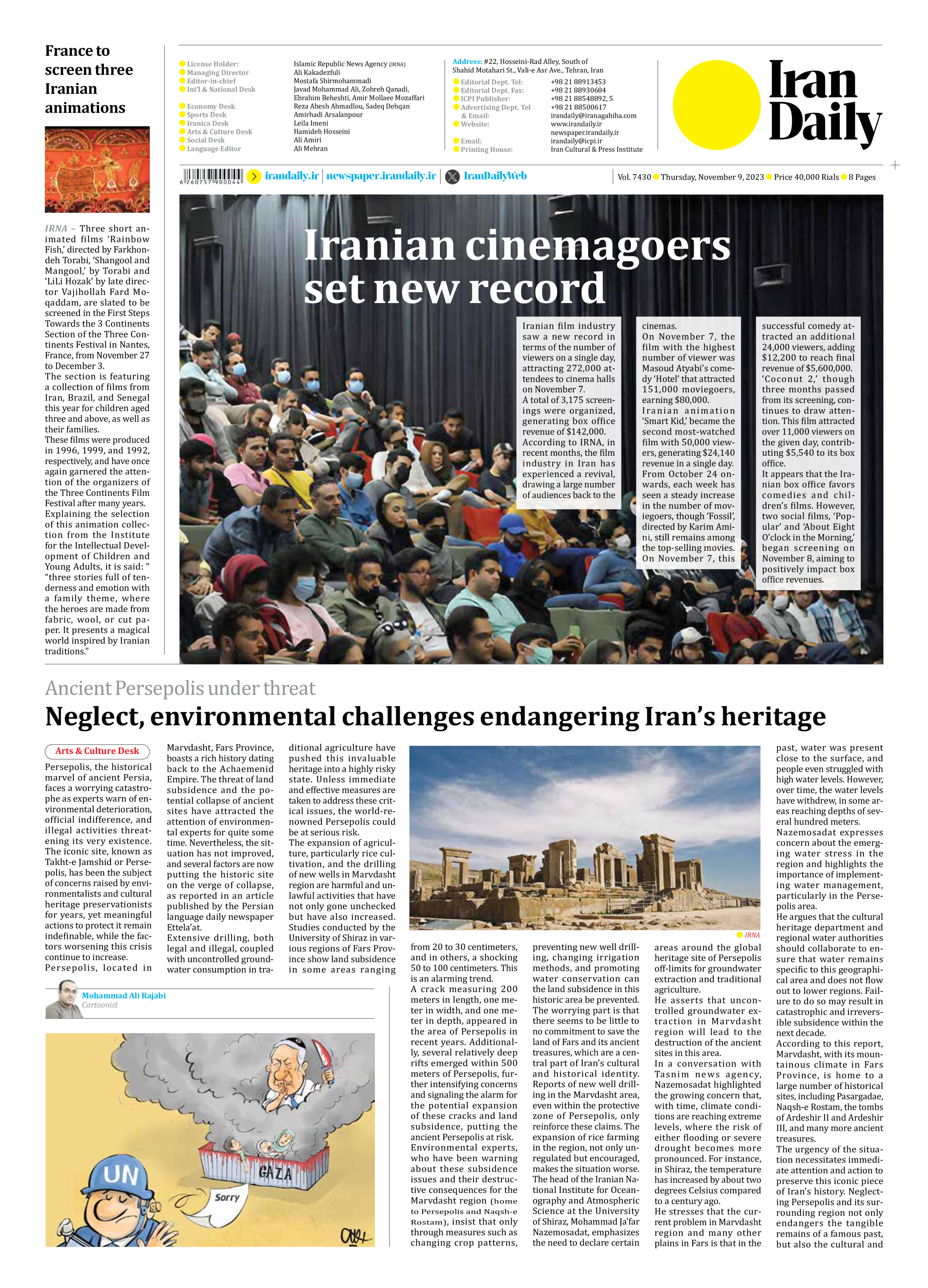
Ancient Persepolis under threat
Neglect, environmental challenges endangering Iran’s heritage
Persepolis, the historical marvel of ancient Persia, faces a worrying catastrophe as experts warn of environmental deterioration, official indifference, and illegal activities threatening its very existence. The iconic site, known as Takht-e Jamshid or Persepolis, has been the subject of concerns raised by environmentalists and cultural heritage preservationists for years, yet meaningful actions to protect it remain indefinable, while the factors worsening this crisis continue to increase.
Persepolis, located in Marvdasht, Fars Province, boasts a rich history dating back to the Achaemenid Empire. The threat of land subsidence and the potential collapse of ancient sites have attracted the attention of environmental experts for quite some time. Nevertheless, the situation has not improved, and several factors are now putting the historic site on the verge of collapse, as reported in an article published by the Persian language daily newspaper Ettela’at.
Extensive drilling, both legal and illegal, coupled with uncontrolled groundwater consumption in traditional agriculture have pushed this invaluable heritage into a highly risky state. Unless immediate and effective measures are taken to address these critical issues, the world-renowned Persepolis could be at serious risk.
The expansion of agriculture, particularly rice cultivation, and the drilling of new wells in Marvdasht region are harmful and unlawful activities that have not only gone unchecked but have also increased. Studies conducted by the University of Shiraz in various regions of Fars Province show land subsidence in some areas ranging from 20 to 30 centimeters, and in others, a shocking 50 to 100 centimeters. This is an alarming trend.
A crack measuring 200 meters in length, one meter in width, and one meter in depth, appeared in the area of Persepolis in recent years. Additionally, several relatively deep rifts emerged within 500 meters of Persepolis, further intensifying concerns and signaling the alarm for the potential expansion of these cracks and land subsidence, putting the ancient Persepolis at risk.
Environmental experts, who have been warning about these subsidence issues and their destructive consequences for the Marvdasht region (home to Persepolis and Naqsh-e Rostam), insist that only through measures such as changing crop patterns, preventing new well drilling, changing irrigation methods, and promoting water conservation can the land subsidence in this historic area be prevented.
The worrying part is that there seems to be little to no commitment to save the land of Fars and its ancient treasures, which are a central part of Iran’s cultural and historical identity. Reports of new well drilling in the Marvdasht area, even within the protective zone of Persepolis, only reinforce these claims. The expansion of rice farming in the region, not only unregulated but encouraged, makes the situation worse.
The head of the Iranian National Institute for Oceanography and Atmospheric Science at the University of Shiraz, Mohammad Ja’far Nazemosadat, emphasizes the need to declare certain areas around the global heritage site of Persepolis off-limits for groundwater extraction and traditional agriculture.
He asserts that uncontrolled groundwater extraction in Marvdasht region will lead to the destruction of the ancient sites in this area.
In a conversation with Tasnim news agency, Nazemosadat highlighted the growing concern that, with time, climate conditions are reaching extreme levels, where the risk of either flooding or severe drought becomes more pronounced. For instance, in Shiraz, the temperature has increased by about two degrees Celsius compared to a century ago.
He stresses that the current problem in Marvdasht region and many other plains in Fars is that in the past, water was present close to the surface, and people even struggled with high water levels. However, over time, the water levels have withdrew, in some areas reaching depths of several hundred meters.
Nazemosadat expresses concern about the emerging water stress in the region and highlights the importance of implementing water management, particularly in the Persepolis area.
He argues that the cultural heritage department and regional water authorities should collaborate to ensure that water remains specific to this geographical area and does not flow out to lower regions. Failure to do so may result in catastrophic and irreversible subsidence within the next decade.
According to this report, Marvdasht, with its mountainous climate in Fars Province, is home to a large number of historical sites, including Pasargadae, Naqsh-e Rostam, the tombs of Ardeshir II and Ardeshir III, and many more ancient treasures.
The urgency of the situation necessitates immediate attention and action to preserve this iconic piece of Iran’s history. Neglecting Persepolis and its surrounding region not only endangers the tangible remains of a famous past, but also the cultural and historical identity of an entire nation.







